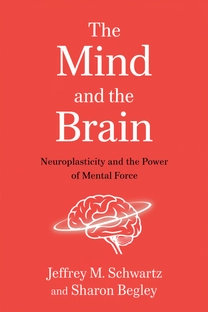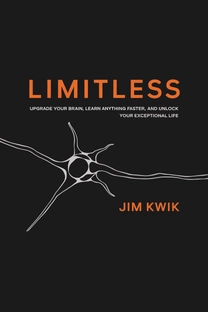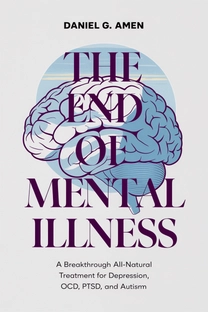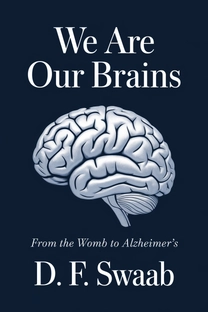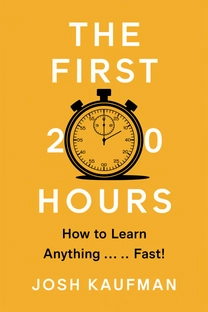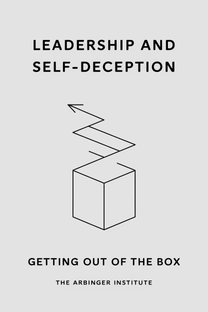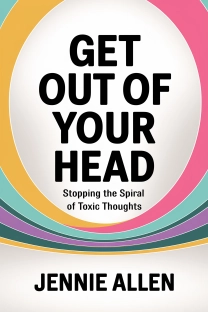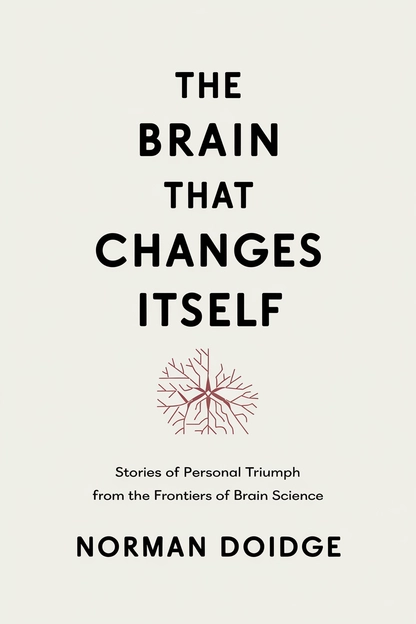
The Brain that Changes Itself
Stories of Personal Triumph from the Frontiers of Brain Science
by Norman Doidge
Brief overview
This book reveals that our brains are constantly changing themselves, responding to learning, experience, and even our own thoughts. By examining case studies of people who overcame seemingly unchangeable conditions, it shows how we can reshape our habits, recover from trauma, and renew our cognitive abilities at any stage of life.
Introduction
Imagine discovering, after a lifetime of believing your brain was fixed, that you could actually reconfigure its wiring. That is the central theme here—a radical shift from seeing the brain as rigidly mapped to a dynamic organ continually shaped by thought, behavior, and environment. The author presents a series of cases and scientific findings that highlight how specific exercises, therapies, and even imagination can transform lives. This eye-opening perspective signals the dawn of a new era in neuroscience, emphasizing real human stories. Readers meet individuals once resigned to lifelong challenges—whether from brain defects, strokes, or learning disabilities—who defied expectations and regained or rewired core abilities. As you proceed, you’ll witness how the simple principle “neurons that fire together, wire together” underlies a broad array of transformations.
The excitement lies not merely in the details of each story but in the bigger insight: our brains are not static southwestern deserts but fertile landscapes ready to sprout new connections if given the chance. With that comes a personal call to action. The text is conversational and approachable, allowing deep scientific concepts to become relevant and mobilizing.
By the final pages, you’ll see that reshaping the brain can become a lifelong habit. You might feel inspired to refine your own daily routines—embracing new hobbies, challenging mental exercises, or unlearning negative thought loops. Above all, this introduction sets the stage to help you realize you can alter your mind’s architecture for the better.
The Basics of Neuroplasticity
Neuroplasticity simply means the brain changes itself in response to what we do, think, and experience. Early science assumed that, after childhood, neurons and synapses were static, and that damage—whether traumatic or degenerative—was largely irreversible. We now know this is false. The brain grows new connections much like muscles grow with consistent exercise. Once we see the brain as plastic, we can understand many phenomena that once seemed mysterious. For instance, the so-called “phantom limb pain” in amputees arises because corresponding brain maps remain active post-injury. Stroke patients regain function when healthy areas of their brains learn to substitute for damaged ones. Each story in this book underscores that the mind’s flexibility is far greater than previously believed.
Research by neuroscientists, from Wilder Penfield to Michael Merzenich, underscores a clear principle: “Use it or lose it,” meaning what we practice strengthens, and what we neglect weakens. This rule applies to everything from playing piano to speaking a second language. The repeated firing of neural circuits fortifies them and expands our capacity. Conversely, the brain prunes inactive pathways over time.
This modern scientific revolution invites us to see challenges (from hearing loss to dyslexia) not as static conditions but, at times, as correctable deficits. Early stories showed stroke survivors retraining undamaged parts of their brains—even after years of paralysis—and children with serious learning issues catching up to their peers once they targeted weak brain functions. These breakthroughs mark the bedrock of neuroplastic thinking.
What is The Brain that Changes Itself about?
In "The Brain that Changes Itself," Norman Doidge masterfully explores the transformative power of neuroplasticity. This groundbreaking work reveals that our brains are not static organs but ever-changing landscapes, constantly reshaped by thought, behavior, and experience. Through compelling case studies of individuals overcoming severe brain injuries, learning disorders, and even lifelong behavioral challenges, Doidge illustrates how we can unlock our brain's potential to reshape our habits, recover from trauma, and improve cognitive abilities at any age.
The book underscores the profound impact neuroplasticity has on our lives, offering tangible ways to enhance memory, clarity, and learning through mental exercises and lifestyle changes. By intertwining stories of personal triumph with scientific evidence, Doidge highlights the incredible capacity for human adaptation, shedding light on how cultural factors, sleep, and personal focus can influence ongoing brain health. This moving narrative not only enlightens readers but inspires them to harness the brain's malleable nature to forge new paths of personal growth.
Review of The Brain that Changes Itself
"The Brain that Changes Itself" stands out as both an enlightening and empowering read, delving into the fascinating realm of neuroplasticity with clarity and precision. Within its pages, Norman Doidge presents the brain as a dynamic entity capable of remarkable self-renewal. The book's strength lies in its detailed anecdotal stories, bringing to life the true potential of the brain when faced with adversity, giving hope to those feeling trapped within their conditions.
One of the book's remarkable aspects is its blend of scientific research with real-world application. From stroke survivors regaining lost functions to individuals with learning disabilities developing newfound capabilities, the stories serve as practical examples of the brain's adaptability. The writing remains accessible, simplifying complex neuroscience for a wide audience while keeping readers engaged with its fluid narrative style. Doidge avoids jargon, making the material both comprehensible and relatable.
"The Brain that Changes Itself" is an essential read for educators, therapists, and anyone curious about the brain's capabilities. Its focus on real-life applications makes it relevant to those seeking personal development or rehabilitation insights. The book is highly recommended as it enlightens readers on the brain's untapped potential, encouraging them to rewire not just how they think but how they live.
Who should read The Brain that Changes Itself?
- Rehabilitation professionals seeking innovative, evidence-based strategies to support their patients' recovery.
- Teachers and educators interested in understanding learning differences and exploring methods to enhance cognitive skills.
- Individuals or families of those dealing with life-changing injuries, looking for hope and actionable insights into recovery.
- Lifelong learners and self-improvement enthusiasts eager to apply brain science to enhance their personal development.
- Healthcare providers searching for integrative approaches that combine mental and physical therapies for brain health.
About the author
Book summaries like The Brain that Changes Itself
Why readers love Mindleap
10-Minute Book Insights
Get the core ideas from the world's best books in just 10 minutes of reading or listening.
Curated For You
Discover your next favorite book with personalized recommendations based on your interests.
AI Book ExpertNew
Chat with our AI to help find the best book for you and your goals.
Reviews of MindLeap
Love how I can get the key ideas from books in just 15 minutes! Perfect for my busy schedule and helps me decide which books to read in full.
Alex R.
The summaries are incredibly well-written and the audio feature is perfect for my commute. Such a time-saver!
Jessica M.
Great app for personal growth. The insights are clear and actionable, and I love how they capture the essence of each book.
Chris P.
The app is beautifully designed and the summaries are top-notch. Definitely worth every penny!
Sarah K.


